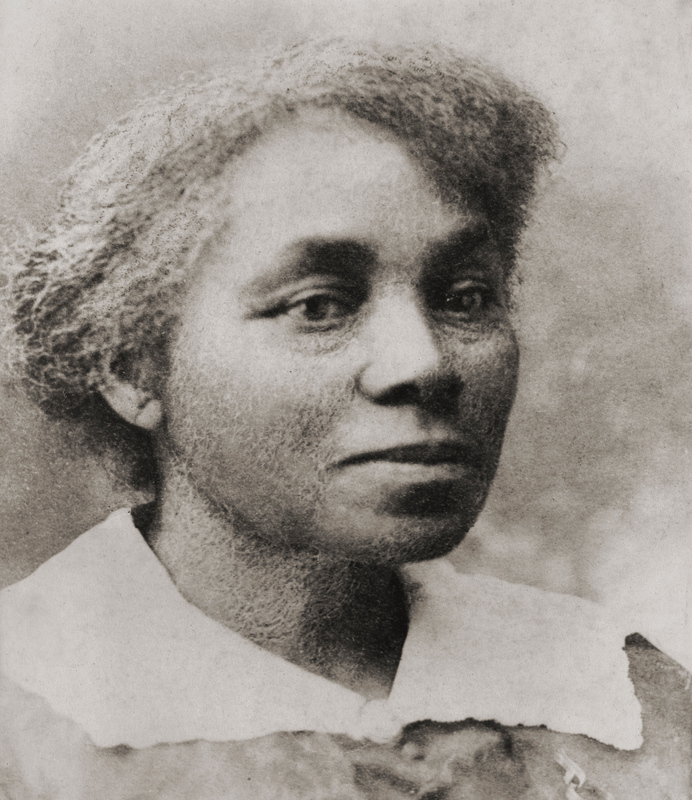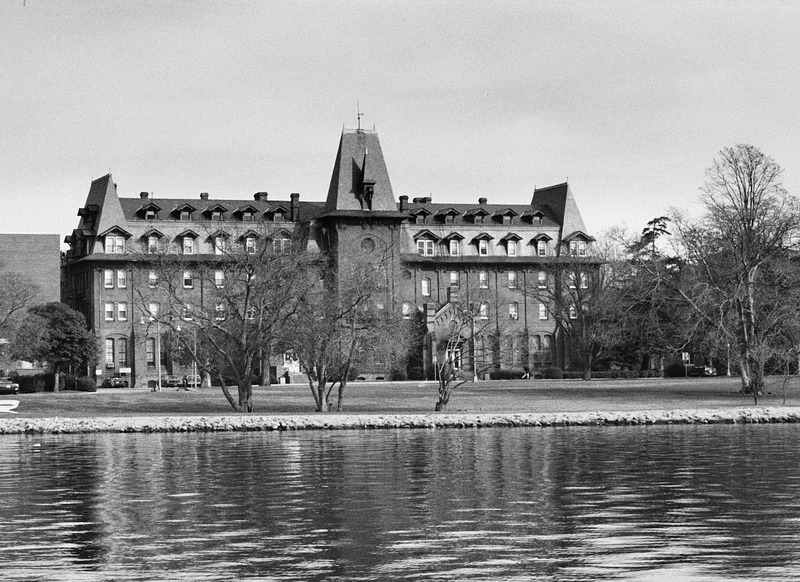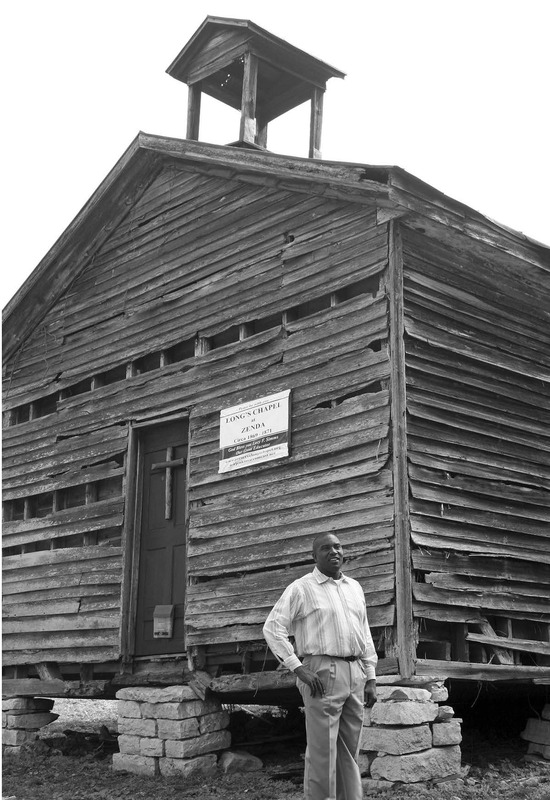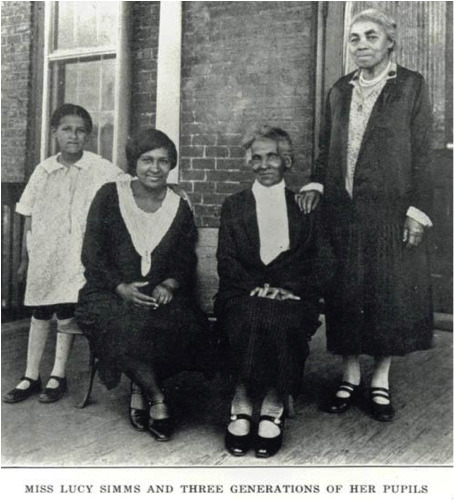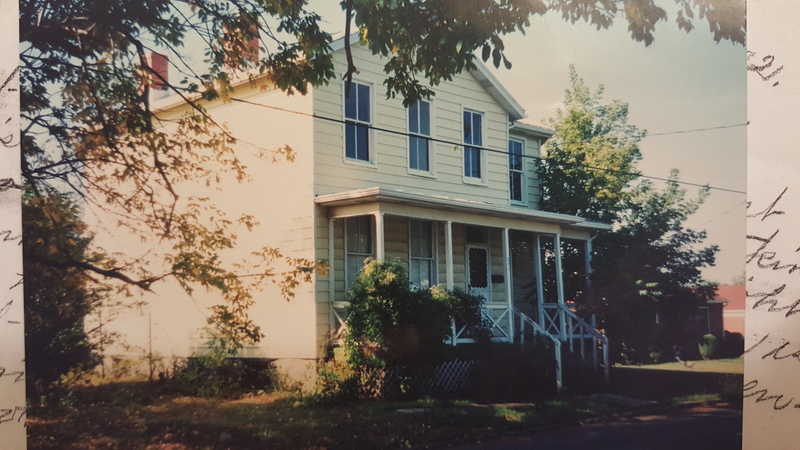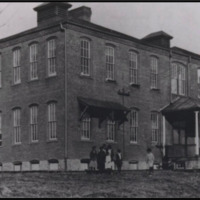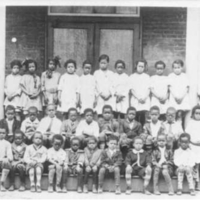The Life of Lucy F. Simms
Lucy Frances Simms
Lucy F. Simms is remembered as one of the most influential leaders in African American education in Harrisonburg. Miss Simms was born into slavery in 1856 to the Gray family, who purchased her grandmother from a nearby cousin of Abraham Lincoln. It was long believed that Miss Simms was born here in Harrisonburg, either at the Collicello estate or at Hilltop Plantation, both owned by Algernon Gray. However, recent evidence suggests that she may have been born in Roanoke, during the Gray family’s brief relocation to an estate they owned further south.
Regardless of her origins, Miss Simms was living in Harrisonburg at the time of the Emancipation Proclamation. Following her own education at Hampton Institute, Miss Simms returned to educate the Harrisonburg community. Her advocacy is commemorated by the Lucy F. Simms School, named in her honor in 1939.
An Opportunity at Hampton
In 1874, Lucy F. Simms enrolled at the Hampton Institute in Virginia, a school founded with the mission of educating former slaves to “teach and lead their people.” Miss Simms graduated in 1877, just one year after Booker T. Washington, the school’s most famous graduate. Like Washington, Miss Simms dedicated her career to her community. She returned to Rockingham County to teach over 1,800 students across three generations. She was often featured in Hampton publications, which praised her for her energy and accomplishments. In 1929, one such profile read: “When you see Miss Simms for yourself and at the same time dwell upon her record of years of service, you will wonder, perhaps become a bit envious, and say to yourself, “How does she do it? How does one stay so young?”
"I am teaching and working for my race."
–Lucy F. Simms
A Lifetime of Teaching
Lucy F. Simms brought this energy and dedication to the three schools where she spent her 56-year teaching career, starting in Athens Colored School, later known as Zenda, in 1877. A desire for fair pay led her to Harrisonburg, where she taught out of the basement of the Harrisonburg Catholic Church. There, however, the janitor frequently threw out her students' work in preparation for Sunday services. Eventually the growing number of students prompted the construction of Effinger Street School, where Miss Simms taught alongside her half-brother, Ulysses Grant Wilson, for the next 52 years. At Effinger, she took on what was often described as a maternal role with her students, treating them with kindness, high expectations, and respect.
Community Leader and Activist
As an educator, Miss Simms responded to the needs of her community with thoughtfulness and care. Because most of her students had working parents, Miss Simms helped the students get ready for school by combing and brushing their hair. Her students often returned this affection by bringing her freshly picked flowers to decorate her desk. Miss Simms also took a leadership role in the wider Harrisonburg community. In 1914, she was appointed president of the newly founded Colored Teachers’ Association. She was a choir member and Sunday School teacher for the John Wesley Methodist Church, and a committee member of the “Colored Division” of the United War Work Campaign, during World War I.
“When I calculate the time I have been teaching by years, it seems quite a while, but, when I calculate by dollars and cents, it seems but a short while.” –Lucy F. Simms
Miss Simms Remembered
When Lucy F. Simms passed away at home in 1934, her funeral was the most widely attended in the history of African American funerals in Harrisonburg. Former students, fellow educators, and neighbors came to pay their respects to the woman who gave more to African American education in Harrisonburg than any other person in her time. According to one newspaper account of her funeral, “children of the Effinger Street School lined the driveway from the gate to the grave.” Newtown Cemetery, where she is buried, was added to the National Register of Historic Places in 2015. Her house, though extensively renovated, still stands at 231 East Johnson St. When the Effinger Street School was finally replaced in 1938, the School Board chose to name the new school in her honor. Below is the Lucy F. Simms School song dedicated to its namesake, Miss Lucy Frances Simms.
"We do not forget each other even after school days are over."
–Lucy F. Simms
The Lucy F. Simms School Song
Dear Lucy Simms, Dear Lucy Simms, You are our fondest hopes and dreams. May your dear light shed all its beams. On all of us dear Lucy Simms. We are your sons and daughters true, We Would to you be loyal too. We will stand firm for all that’s right; We must be worthy in thy sight.
Dear Lucy Simms, Dear Lucy Simms, Despite what-e’er the years may bring. We’ll raise to thee our lofty hymns As thy eternal praise we sing. Let centuries roll on and on, Sunshine or shadows compass me. We’ll be content before thy throne; To lift our loyal praise to thee.
Following is a gallery of related images.

